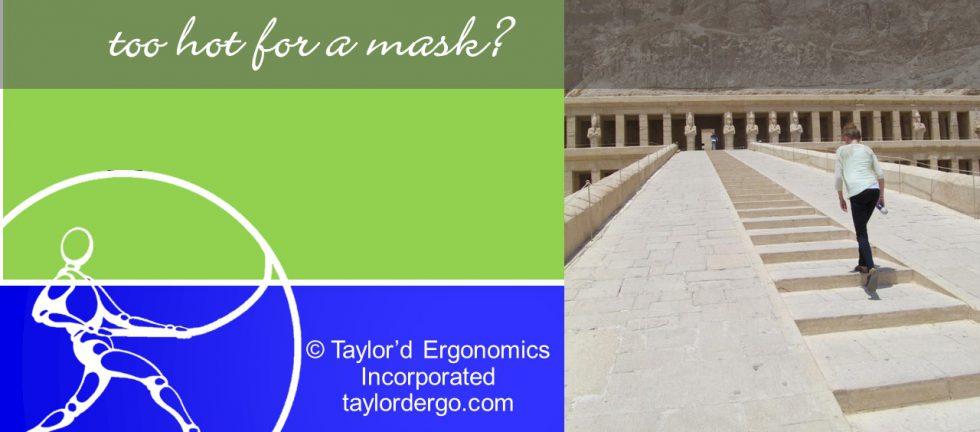Heat stress prevention is a hot topic these days (pun intended), particularly around the added challenge of Covid PPE. Masks appear to be here to stay, at least for this summer. Do masks increase heat stress?
We’ve learned a lot about making masks safe and comfortable:
- They need to be double-layer or triple layers, snug-fitting, and made of cotton or other breathable material.
- Tricks for avoiding fog on the glasses include pinching the nose tight, breathing out through the nose, wearing the glasses over the edge of the mask, and using de-fogging agents.
- We’ve all experimented with different types of straps and earpieces, each of us finding our comfortable preferences.
The CDC (in the US ) has suggested that masks are acceptable to wear even in hot work environments. They also acknowledge that cloth face coverings can:
- Reduce your ability to get rid of heat by sweating
- Make breathing more difficult
- Increase the perception of anxiety
In Ontario, the WSPS recently stated that “The use of face masks and respiratory protection is not linked to a significant increase in core body temperature.” I could not find much other official guidance about mitigating the effects of masks on heat stress, although it may be telling that Ontario.ca advises that masks may be temporarily removed “to engage in an athletic or fitness activity.” Perhaps like “heavy work”??
Why do I feel like I can’t breathe by the end of a day in a hot plant?
Perhaps the answer lies in dampness. Your breath can travel easily through a dry mask, but not a wet one. The moisture in a damp mask makes the fabric less porous. Since the virus is carried on wet aerosols, we should be grateful that our mask traps liquid, preventing the contaminated air from reaching your lungs, or escaping out from your face mask if you’re infected. But once the mask is saturated with moisture, the small gaps in the fabric fill up, and even air is blocked.
What’s the solution? The trick, I think, is to bring a bunch of masks to work, and to exchange a damp mask for a dry one, as often as possible. When you’re sweating, and it’s humid, your mask won’t stay dry for long. When you’re working hard, huffing and puffing dampen your mask faster than regular breathing. On the bright side, the price of masks has come down, and the fashion choices are nearly endless.
Our best advice, for the moment, is to:
- Encourage employees to exchange damp masks for dry ones as often as possible.
- Encourage employees to monitor themselves and their co-workers for the signs of heat-related illness. (Much as you would usually, but with heightened vigilance this year.)
- Need help with your heat stress prevention program? Contact us.
(The image above was taken in Egypt in 2013, so we were not wearing masks. Although the climb was long and the weather extremely hot, the air was not humid.)


